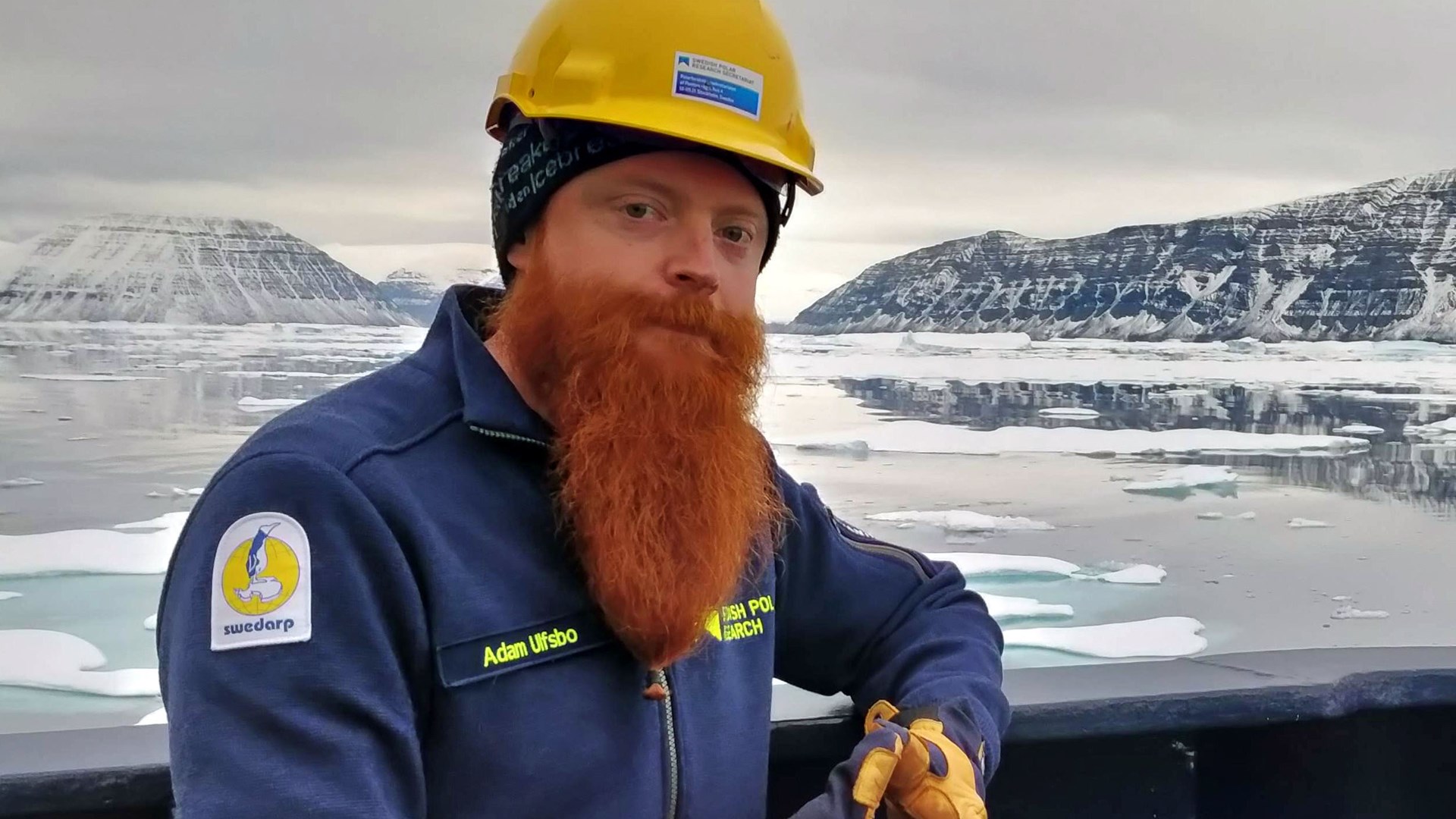"We want to get an overall picture of the state of the Arctic"
 Adam Ulfsbo, researcher at University of Gothenburg
Adam Ulfsbo, researcher at University of Gothenburg
This summer's polar expedition with the icebreaker Oden constitutes the Swedish contribution within the international research initiative Synoptic Arctic Survey, SAS. One of the researchers participating is Adam Ulfsbo at the University of Gothenburg and he is really looking forward to the expedition.
– After more than a year of pandemic and after the individual quarantine we will have before the expedition, I think that both researchers and crew are especially eager this year to set sail, reach the pack ice and begin all research activities.
What do you hope to achieve with the expedition?
– The area that we are going to between Greenland and the North Pole is basically a white canvas when it comes to observations, and we hope to fill this gap. Based on the data we will collect, we hope to gain a better understanding of the physical and biogeochemical processes and feedback mechanisms that affect the marine system in the area, says Adam Ulfsbo.
– Together with our colleagues from the other international expeditions within SAS, we hope to get an overall picture of the situation throughout the Arctic. The Arctic Ocean is an ocean in rapid transition, and it is of the utmost importance to have a solid baseline and process understanding to fall back on to be able to follow the development.
You have been on several research expeditions with Oden. How is this different from the previous ones?
– The overall goal within SAS is to try to map as large a part of the various reagions of the Arctic as possible through a joint sampling program in terms of hydrographic, chemical, and biological parameters during several international expeditions 2020–2022. The Swedish SAS expedition with Oden also has an impressive and expanded multidisciplinary sampling program, primarily in oceanography, chemistry, and biology. The area we are going to also differs from previous expeditions, an area with very limited observations historically and probably tougher ice conditions.
You are the research leader for the Carbon and Tracer Chemistry work package. What is it about?
– The Carbon and Tracer Chemistry work package forms a large part of the chemical measurement program on board. These include measurements of the marine carbonate system (pH, alkalinity, dissolved inorganic carbon), dissolved oxygen, nutrients (nitrate, phosphate, silicate, ammonium), dissolved and particulate organic carbon, as well as isotopes. We sample and measure discrete samples from the water sampler (CTD rosette) from the surface down to a depth of 4000 meters, continuously from the ship's surface water intake, as well as from drilled sea ice cores.
– Together with our colleagues in the other work packages, we hope to get a better picture of how dissolved substances are distributed in the different water masses, where they come from and where they are going. This work package also includes issues concerning the rate and distribution of ocean acidification and the accumulation of anthropogenic carbon dioxide.
What is it like to get on board Oden?
– It is always a joy to get on board Oden. First-class food and accommodation, together with extremely competent colleagues and crew, provide all the conditions for a successful expedition!


